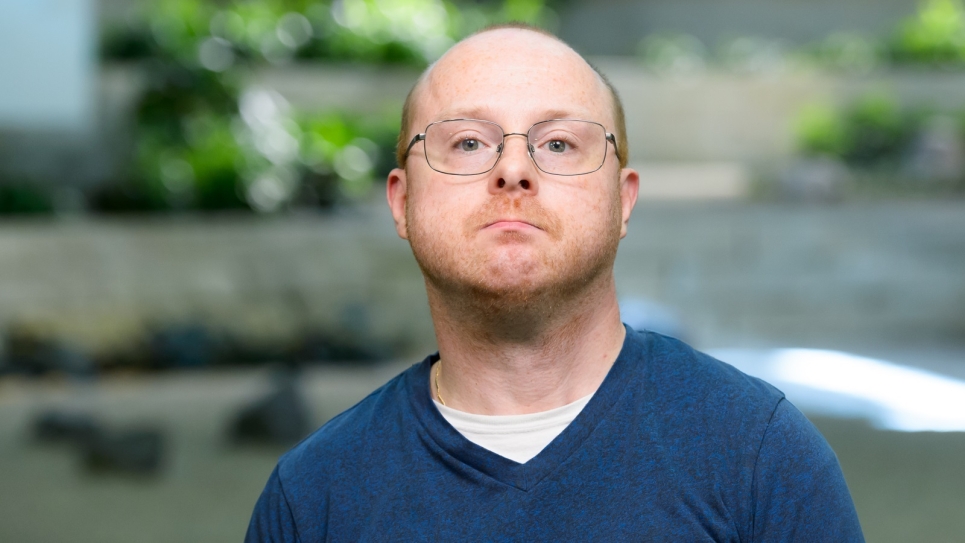
Ben Lenard, HPC Systems and Database Administrator. (Image by Argonne National Laboratory.)
Ben Lenard supports the ALCF's Aurora exascale supercomputer, and manages databases for the facility's HPC systems. In his words, his job is “to help make science happen."
Ben Lenard first became interested in science as a child because he wanted to find out how things worked. “Growing up, I always wanted to figure out how things break or how things come apart,” Lenard said. He would take computers and electronics apart to see what would happen.
At 16, he started college, and at 20, he graduated from DePaul University with a degree in computer science. He now holds a Master of Science degree and an MBA from Northern Illinois University and is working on a Ph.D. in computer science at DePaul.
Having worked in information technology (IT) for some time, he sought a change in environment. He found it at the U.S. Department of Energy’s (DOE) Argonne National Laboratory. His previous role was at JPMorgan Chase. “I’ve always been in IT,” Lenard said. “I was working in corporate America, and I was looking for a change.” Working with supercomputers was always his dream job. He applied several times and finally got the position with Argonne in 2015.
Lenard describes his role at Argonne as being “a jack of all trades.” In other words, he takes on many roles in order to “help make science happen.”
There is a lot of variation in the job of a systems and database administrator. “Every day is different,” Lenard explained. “One day I could be tuning a database, and the next day I could be designing a method to help our team transfer data to researchers.”
Much of his work supports supercomputers at the Argonne Leadership Computing Facility, a DOE Office of Science user facility that provides high performance computing (HPC) resources and expertise to the scientific community. With a focus on the systems’ data and databases, Lenard’s work has spanned multiple generations of supercomputers at the lab: first Mira, then Theta, then Polaris and now Aurora. These supercomputers are significantly different from each other. Mira was an IBM Blue Gene/Q, Theta was a Cray XC40, Polaris is a Hewlett Packard Enterprise (HPE) system based on AMD processors, and Aurora, Argonne’s new exascale machine, is an Intel system integrated by HPE.
Lenard also works with programs aimed at getting kids into science, technology, engineering and math (STEM). He feels it is important for kids to know about the opportunities available to them in STEM fields and have the chance to explore their interests.